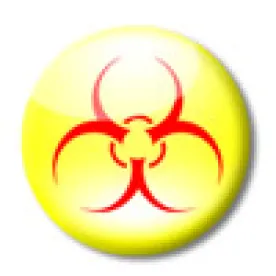On August 30, 2016, the California Office of Environmental Health Hazard Assessment (OEHHA) adopted revised warning requirements under the Safe Drinking Water and Toxic Enforcement Act of 1986, commonly known as Proposition 65 and codified at California Health and Safety Code section 25249.5. The new regulations take effect on August 30, 2018.
Proposition 65 requires the State of California to publish a list of chemicals known to cause cancer or reproductive harm. Any business with 10 or more employees doing business in California is prohibited from knowingly or intentionally exposing any individual to a listed chemical without giving a “clear and reasonable” warning. The new regulatory revisions modify the warning method and content deemed by OEHHA to be de facto “clear and reasonable” under the statute’s safe harbor provisions. The revisions also clarify which entities have responsibility for providing a warning.
Revised Content of Safe Harbor Warnings
Starting on August 30, 2018, warnings must specifically name “one or more of the listed chemicals in the consumer product or affected area for which the warning is being provided.” Where a warning is being provided for more than one endpoint (e.g., cancer and reproductive toxicity), the warning must include the name of one or more chemicals for each endpoint. For example, for consumer products, the revised regulations provide that the following language will be considered “clear and reasonable“:
-
For exposures to listed carcinogens: “This product can expose you to chemicals including [name of one or more chemicals], which is [are] known to the State of California to cause cancer. For more information go to P65Warnings.ca.gov.”
-
For exposures to listed reproductive toxicants: “This product can expose you to chemicals including [name of one or more chemicals], which is [are] known to the State of California to cause birth defects or other reproductive harm. For more information go to P65Warnings.ca.gov.”
-
For exposures to both listed carcinogens and reproductive toxicants: “This product can expose you to chemicals including [name of one or more chemicals], which is [are] known to the State of California to cause cancer, and [name of one or more chemicals], which is [are] known to the State of California to cause birth defects or other reproductive harm. For more information go to www.P65Warnings.ca.gov.”
In addition, the warning must be prefaced by the word “WARNING” in bold capital letters and include a symbol consisting of a black exclamation point in a yellow equilateral triangle with a bold black outline. Where the sign, label or shelf tag for the product is not printed using the color yellow, the symbol may be printed in black and white. The symbol shall be placed to the left of the text of the warning, in a size no smaller than the height of the word “WARNING”.
Electronic Notifications
The revisions also provide for certain methods of providing a warning that will be considered “clear and reasonable.” These methods include labels that incorporate the content above, and product-specific warnings on a posted sign, shelf tag or shelf sign at each point of display for the product. For the first time, a warning may also be provided via “any electronic device or process that automatically provides the warning to the purchaser prior to or during the purchase of the consumer product, without requiring the purchaser to seek out the warning.” For internet purchases, a warning that complies with the content requirements above must be provided “by including either the warning or a clearly marked hyperlink using the word ‘WARNING’ on the product display page, or by otherwise prominently displaying the warning to the purchaser prior to completing the purchase.” Requirements are also proscribed for products sold via catalogs.
New Product-Specific Warnings
The new warning regulations also provide for new product-specific safe harbor warnings, applicable to food, alcoholic beverages, restaurants, furniture, raw wood, dental care, prescription drugs, vehicles, petroleum products, and others. Where these product-specific requirements apply, the general content and methods listed above should not be used.
Clarifying the Responsibility for Providing Warnings
The revisions clarify that the manufacturer, producer, packager, importer, supplier, or distributor has the primary responsibility for providing a consumer product warning. This is intended to reduce the burden on retailers. However, a retailer can still be held responsible for failure to provide a required warning where the retailer is selling a product under its own brand or trademark, or where the retailer has: (a) knowingly introduced a listed chemical into the product, or knowingly caused a listed chemical to be created in the product; (b) covered, obscured or altered a warning label; (c) received a warning notice and materials from the manufacturer or supplier, but sold the product without supplying the warning; or (d) has actual knowledge of the potential consumer product exposure requiring the warning, and there is no manufacturer, producer, packager, importer, supplier, or distributor of the product who is subject to Proposition 65.
Next Steps
Businesses subject to Proposition 65 have a two-year grace period before the new warning requirements become effective. During that grace period, a business may choose to comply with either the old or new warning requirements. Companies that do business in California should carefully review the new regulations and asses their potential impact.




 />i
/>i


